
Back
Canarium pilosum Benn.
| Family Name: | Burseraceae |
| Synonyms: | Canarium grandiflorum Benn. |
| Common Name: | Kedondong Hutan, Kedondong Kerut |
Name
Classifications and Characteristics
| Plant Division | Angiosperms (Flowering Seed Plants) (Dicotyledon) |
|---|---|
| Plant Growth Form | Tree (Medium (16m-30m)) |
| Lifespan (in Singapore) | Perennial |
| Mode of Nutrition | Autotrophic |
| Plant Shape | Irregular |
| Maximum Height | 27 m |
Biogeography
| Native Distribution | Sumatra, Peninsular Malaysia, Singapore, and Borneo |
|---|---|
| Native Habitat | Terrestrial (Primary Rainforest, Mountain, Freshwater Swamp Forest) |
| Preferred Climate Zone | Tropical |
| Local Conservation Status | Native to Singapore (Vulnerable (VU)) |
Description and Ethnobotany
| Growth Form | It is a tree up to 27 m tall. |
|---|---|
| Foliage | Its alternate, stalked, pinnate leaves have 2-3 pairs of leaflets with leaf blades that are oval, oblong or egg-shaped. They are densely covered with hair below, while sparsely covered with hair above. Its leaflets are greenish, yellowish or greenish-brown when dried, and 7-19 by 3.5-9 cm. |
| Flowers | Its male flowering shoots are 4-26 cm long, while its female flowering shoots are 1.5-10 cm long. Its flowers are 12 mm long and covered with hair. |
| Fruit | Its oblong fruits are 2-3 by 1-1.5 cm and usually contain one seed. |
| Habitat | It grows in primary forests, swamps, and hills, up to 600 m altitude. It occurs locally in the vicinity of Seletar Track and at Bukit Timah Nature Reserve. |
| Associated Fauna | Its flowers are pollinated by mammals. |
| Cultivation | It can be propagated by seed. |
| Etymology | Latin Canarium, from the Malay name kanari and the Moluccan name kenari; Latin pilosus, having soft and distinct hair |
| Ethnobotanical Uses | Edible Plant Parts : Edible Seeds Medicinal: The resin is used to treat wounds. Timber & Products: The wood is said to be very durable against insects and is used in house-building. Others: The seeds are edible and sweet. It has horticultural value because of its attractive foliage. |
Landscaping Features
| Landscaping | It may be suitable for parks. |
|---|---|
| Landscape Uses | Parks & Gardens |
Fauna, Pollination and Dispersal
| Pollination Method(s) | Biotic (Fauna) |
|---|---|
| Seed or Spore Dispersal | Biotic (Fauna) |
Plant Care and Propagation
| Light Preference | Full Sun |
|---|---|
| Water Preference | Moderate Water |
| Plant Growth Rate | Moderate |
| Rootzone Tolerance | Moist Soils, Well-Drained Soils, Fertile Loamy Soils |
| Propagation Method | Seed |
Foliar
| Foliage Retention | Evergreen |
|---|---|
| Mature Foliage Colour(s) | Green |
| Mature Foliage Texture(s) | Hairy / Hirsute |
| Foliar Type | Compound |
| Foliar Arrangement Along Stem | Alternate |
| Foliar Attachment to Stem | Petiolate |
| Foliar Shape(s) | Non-Palm Foliage |
| Foliar Venation | Pinnate / Net |
Floral (Angiosperm)
| Flower & Plant Sexuality | Unisexual Flowers |
| Flower Grouping | Cluster / Inflorescence |
|---|
Fruit, Seed and Spore
| Fruit Classification | Simple Fruit |
|---|---|
| Fruit Type | Fleshy Fruit , Non-Accessory Fruit |
Image Repository
Others
| Master ID | 31061 |
|---|---|
| Species ID | 5448 |
| Flora Disclaimer | The information in this website has been compiled from reliable sources, such as reference works on medicinal plants. It is not a substitute for medical advice or treatment and NParks does not purport to provide any medical advice. Readers should always consult his/her physician before using or consuming a plant for medicinal purposes. |

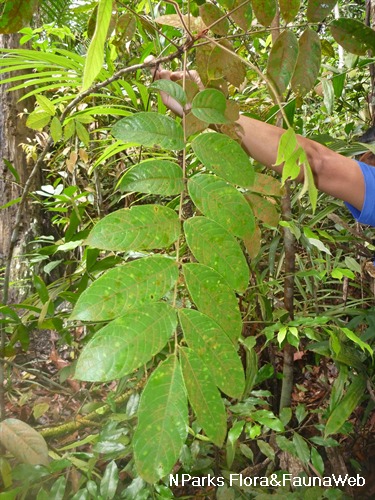

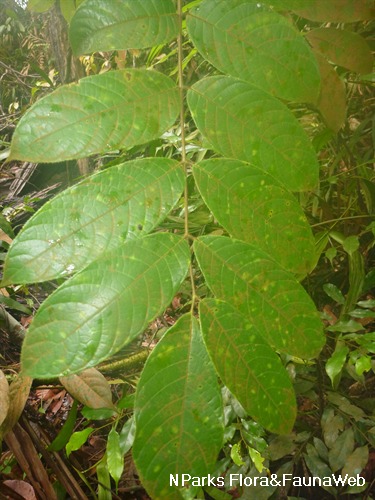
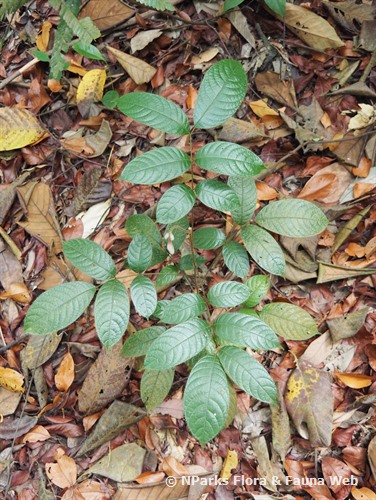

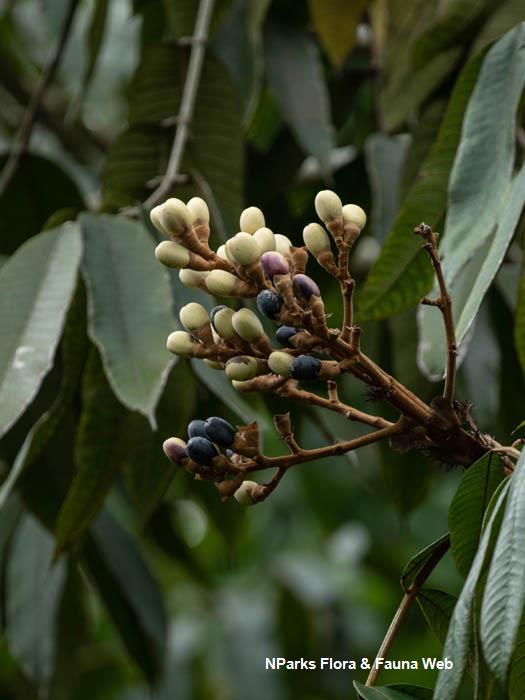
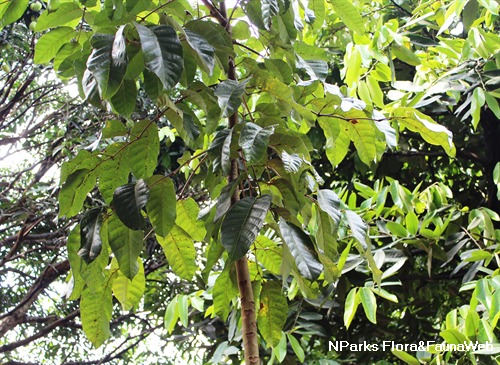
_lowres.jpg)
.jpg)